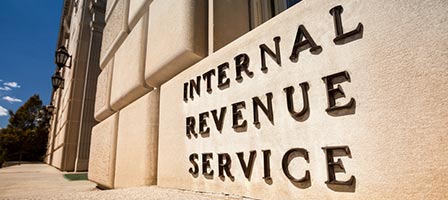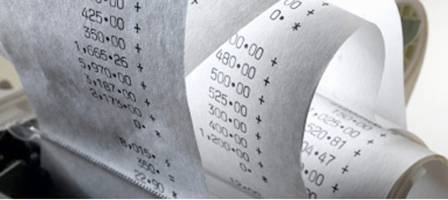QSB Stock Gain Exclusion: Who Can Take Advantage and How to Do It
- Learn about the changes to QSB stock exclusions over the years.
- Discover the limitations to QSB stock exclusions.
- Learn some of the important rules regarding classification as a QSB.
- Discover additional limitations based on the issuer of the QSB stock.
Originally, people viewed selling stocks identified as having Qualified Small Business status as offering marginal benefit. But the last several years have seen incremental changes to how gains from the sales of these stocks have been treated. As of the most recent shift, which created a 100% exclusion with certain limitations, these stocks now offer significant opportunities for those who invest in startups and other small businesses.
Section 1202 addresses the sale of Qualified Small Business (QSB) stock held for more than five years. It excludes gains from sales, but only under highly specific criteria and limitations. Tracking the exclusion’s history, stockholders were originally limited to excluding 50% of their gains from the sale of QSB stocks. That number increased to 75% for shares acquired after February 17, 2009 and before September 28, 2010.
Even then, sellers viewed the exclusion with little enthusiasm. And you can see why: The gains not excluded were taxed at rates much higher than capital gains rates. All that changed when the exclusion increased again to 100% for shares acquired after September 27, 2010.
Limitations to QSB Stock Exclusions
Important limitations to these exclusions exist. Most notably, for each taxable year, sellers may only exclude the greater of 10 times the aggregate adjusted bases of the QSB stock or $10 million dollars. Still, even with these limitations, the 100% exclusion has created a virtual tax-exempt gain. This has inspired renewed interest in putting money into small businesses and startups.
This has provided opportunities. Pass-through entities like partnerships can buy and sell QSB stock at the ultimate investor level offered to noncorporate shareholders like trusts, estates, and individuals.
This means that their total gain exclusion goes beyond the standard limitations. Further, each partner in a 10-partner group in which each owns 10% of the partnership’s QSB stock with $0 basis for $100 million can exclude their own share of the gain. The total qualifies because it is broken down to the ultimate investor view. Where this is a relatively simple calculation, for others the requirements of section 1202 will likely create far greater barriers.

Understanding the requirements and considerations involving a QSB
Section 1202 contains many rules for being classified as a QSB, but this article cannot cover all of them. However, it will point out important elements that businesses or investors thinking about their own qualifications should consider. Its most elemental criterion requires that the business be a domestic C corporation whose aggregate gross assets have never exceeded $50 million through the time that the stock for which the gain exclusion is being sought was issued. Other requirements include:
Gross asset test
We know that the domestic C corporation must not have had aggregate gross assets exceeding $50 million at any point between August 10, 1993 and the time that the stock seeking the QSB exemption was issued. However, that limitation holds true for the time period immediately after issuance of the stock as well. We do not base this on fair market value. Instead, we calculate gross assets based on the tax basis of the company’s assets.
Still, we use fair market value to assess circumstances involving assets other than cash. We also use it when an existing business incorporated into the small business. It’s also important to understand that if a business is a member of a parent-subsidiary controlled group, all corporations are treated as a single unit when calculating total gross assets.
Original issuance requirement
In order to qualify for the exemption, the QSB stock shareholder must have first acquired it as an original owner. They must have purchased it for cash, by providing property, or by providing services and obtaining it directly from either the corporation or its underwriter as a qualified shareholder.
Buying the stock from another shareholder will not meet the original issuance requirement. Therefore, it will not qualify the holder of stock for the QSB stock gains exemption. However, there are ways to get around this requirement. For example, investors could acquire a target business for the specific purpose of creating a new C corporation. That would meet Section 1202’s criteria.
Similarly, consider some tax-free incorporations or reorganizations that involve the exchange of QSB stock for stock of another organization. These may be eligible for exclusion of gains at a later point when the stock is sold.
Did you acquire QSB stock as a gift or by having inherited it? Then, the original issuance requirement will not prevent the realization of the exemption benefit. The same is true of distributions to a noncorporate partner by a partnership as long as the noncorporate partner held its partnership interest when the partnership first acquired the QSB stock. This is a complex issue and many situations – including acquiring the stock as the satisfaction of debt for equity, through cashless warrant exercises, or through convertible debt conversions – should be addressed with your Fiducial representative.
Active business requirement
The issuing corporation must use at least 80% of its assets to operate one or more qualified trades or businesses (QTOB). We gauge this by value. If a corporation owns more than half of a subsidiary corporation’s stock, then you must include that ratable share in the determination of the assets’ value and the percentage of assets currently used for business operations.
The rules state that certain fields do not qualify as a QTOB. However, whether a business falls into these categories or not may be open to interpretation. And this can introduce a significant amount of confusion. The fields listed as not qualifying include those involved in law, health, brokerage services, accounting, engineering, financial services, actuarial science, architecture, performing arts, consulting, or athletics.
Additional limitations based on issuer
Even once a shareholder meets the specifications that qualify them for the Section 1202 exclusions, an additional limitation exists based on the issuer of the QSB stock. That limitation depends on whichever of the following two elements is larger:
- Ten times the aggregate adjusted bases of the QB stock sold by the taxpayer during the taxable year
- $10 million, less the aggregate amount of eligible gain attributed to disposition of stocks issued by the same corporation that the taxpayer realized in a previous taxable year
As previously indicated, the eligible excludible gain must have been on sale or exchange of QSB stock owned for more than five years during the taxable year. We apply this at the shareholder level for each investor when a pass-through entity holds the stock. We apply this to each investor when calculating the per-issuer limitation.
This effectively allows investors in partnerships, whether trusts, estates or individuals, to claim a gain exclusion. When combined, this exclusion is actually larger than the stated $10 million or 10 times the basis cap limitation. The gain exclusion amount can also be increased. To do this, gift some of the stock in question to family members before the sale.
Summing Things Up
Many benefits exist for those who can take advantage of the Section 1202 gain exclusion on the sale of QSB stock. However, the requirements and eligibility criteria are intimidating and complicated. You need to protect your own interests and make sure you understand how it applies to you. We urge you to speak with your Fiducial representative before claiming the exclusion for yourself.
Have questions or need additional details related to any of these credits? Call Fiducial at 1-866-FIDUCIAL or make an appointment at one of our office locations to discuss your situation.
Ready to book an appointment now? Click here. Know someone who might need our services? We love referrals!
For more small business COVID-19 resources, visit Fiducial’s Coronavirus Update Center to find information on SBA loans, tax updates, the Paycheck Protection Program, paid sick and family leave, and more.









